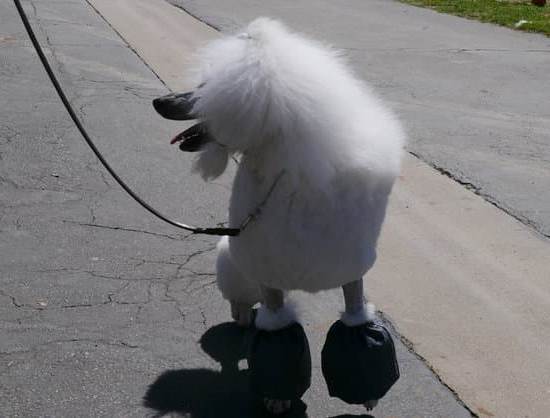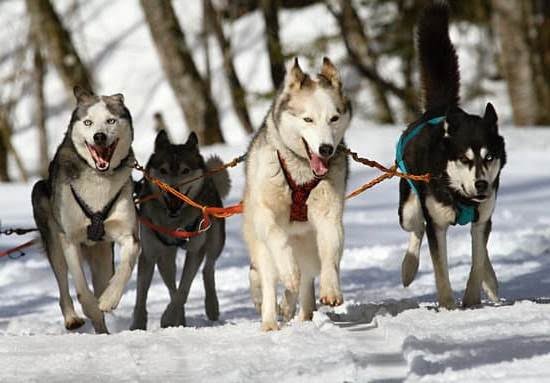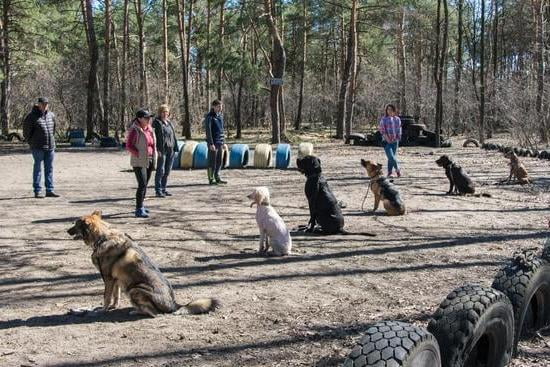Moving to a new house can be an exciting yet challenging time for both you and your furry companion. One of the most important aspects of this transition is ensuring that your dog adjusts well to the new environment. If you’re wondering how to train your dog when moving to a new house, there are several key factors to consider in order to make the process as smooth as possible.
First and foremost, it’s crucial to prepare your dog for the move by introducing them to the concept gradually. This can include packing their belongings last, maintaining their regular routine as much as possible, and positively associating moving-related activities with treats or playtime. By easing them into the process, you can help alleviate any anxiety or confusion they may experience during the transition.
Understanding your dog’s behavior during the move is also essential in order to address any signs of stress or discomfort. Dogs may exhibit changes in their eating habits, sleeping patterns, or overall demeanor during this time. By observing their reactions closely and responding with patience and empathy, you can better support them through this significant life change.
Understanding Your Dog’s Behavior During the Move
Moving to a new house can be a stressful time not just for you, but also for your furry companion. Dogs can often pick up on your stress and may exhibit changes in behavior during the moving process. Understanding your dog’s behavior during the move is crucial in providing them with the support they need to navigate this transition smoothly. Here are some key insights into how dogs may behave when faced with a move:
- Dogs may become more anxious or clingy as they sense changes in their environment, such as packing boxes or moving furniture.
- Some dogs may display signs of fear or confusion, such as pacing, whining, or hiding, due to the disruption in their usual routine.
- Other dogs may exhibit destructive behaviors like chewing or digging as a way to cope with the stress of the move.
It is essential to recognize these behavioral changes and respond appropriately to help your dog feel secure and comfortable throughout the moving process. By understanding your dog’s behavior cues, you can better support them during this challenging time.
During this tumultuous period of change, it is important to remain patient and calm when interacting with your dog. Your reassuring presence can provide comfort and stability for them amidst all the chaos.
Dogs are highly perceptive animals and can pick up on your emotions, so staying positive and composed will help ease their anxiety. By acknowledging and empathizing with your dog’s behavior during the move, you can strengthen your bond and make the transition smoother for both of you.
Creating a Safe Space for Your Dog in the New Home
Moving to a new house can be a stressful time for your furry friend. Ensuring that your dog feels safe and comfortable in the new environment is crucial for their well-being. One of the key steps in helping your dog adjust to the new home is creating a safe space where they can retreat to when feeling overwhelmed or anxious.
Designating a Safe Area
Before the move, it’s essential to set up a designated safe space for your dog in the new home. This area should be quiet, cozy, and free from any potential hazards. Whether it’s a corner of a room, a crate, or a specific area with your dog’s bed and favorite toys, having this safe space will provide them with comfort and security during the transition period.
Familiar Scent and Comfort Items
Incorporating familiar scents and comfort items in your dog’s safe space can also help ease their anxiety. Placing blankets or bedding that carries their scent, along with their favorite toys or treats, will create a sense of familiarity in the new environment. This will reassure your dog that this is their own personal sanctuary within the unfamiliar surroundings.
Gradual Introduction
When introducing your dog to their safe space in the new home, do so gradually and positively. Allow them to explore and get accustomed to the area at their own pace.
Encourage them to spend time in this space by providing treats or engaging in playtime. By making this area a positive experience for your dog, you are helping them feel more at ease and secure during this transition period of moving to a new house.COLOR(red)(“how to train dog when moving to a new house“).
Establishing Routine and Boundaries in the New Environment
Moving to a new house can be a stressful time for both humans and their furry companions. Establishing routines and boundaries in the new environment is crucial in helping your dog adjust smoothly to the change. One of the first steps in this process is to maintain consistency with feeding times, exercise schedules, and potty breaks. Dogs thrive on routine, so try to keep these aspects as consistent as possible during and after the move.
Setting clear boundaries for your dog in the new home is also essential. Whether it’s designating certain areas of the house as off-limits or establishing new rules for behavior, providing structure will help your dog feel secure in the unfamiliar surroundings.
This can include creating a designated sleeping area, teaching them where they are allowed to play, eat, and rest, as well as introducing them to any boundaries outside such as fences or specific areas where they can explore safely.
Additionally, it’s important to slowly introduce your dog to each area of the new home while gradually expanding their access over time. Supervise your dog closely during this process to prevent any unwanted behaviors or accidents. Positive reinforcement techniques can be used to encourage good behavior and reinforce obedience within these newly established boundaries. Consistency in training and patience are key when helping your dog navigate their way through their new living space during this period of transition.
Remember that every dog adjusts differently to change, so be attentive to your pet’s reactions and needs throughout the process. By providing a sense of routine and setting clear boundaries in their new environment, you can help your furry friend feel more comfortable and secure during this significant life transition.
Training your dog when moving to a new house may require time and effort, but it will ultimately contribute to a happier and healthier relationship between you and your beloved companion.
Using Positive Reinforcement Techniques for Training
Implementing Positive Reinforcement
When moving to a new house, using positive reinforcement techniques for training your dog can be highly effective in helping them adjust to the new environment. Positive reinforcement involves rewarding good behavior with treats, praise, or toys to encourage your dog to repeat those behaviors. This method focuses on rewarding desired actions rather than punishing unwanted behaviors, creating a positive and encouraging learning experience for your furry friend.
Consistency Is Key
Consistency plays a crucial role in utilizing positive reinforcement effectively when training your dog in a new home. Make sure to establish clear rules and consistently reinforce them with rewards whenever your dog behaves well. By maintaining a consistent training routine, you can help your dog understand what is expected of them in their new surroundings, promoting a sense of security and stability during the transition period.
Patience and Persistence
Transitioning to a new house can be stressful for dogs, so it’s essential to be patient and persistent in your training efforts. Understand that it may take some time for your dog to adapt to the new environment and learn new routines.
Stay calm, provide ample opportunities for positive reinforcement, and celebrate small victories along the way. With patience and persistence, you can help your dog feel more comfortable and confident in their new home as they get accustomed to the changes.
By incorporating positive reinforcement techniques into your training regimen when moving to a new house, you can create a supportive and nurturing environment for your dog to thrive in their new surroundings. Remember that every dog is unique, so tailor your approach based on their individual needs and personality traits. With time, consistency, and plenty of love, you can help your furry companion adjust smoothly to their new home while strengthening the bond between you both.
Introducing Your Dog to the New Neighborhood
Moving to a new neighborhood can be an exciting but overwhelming experience for your dog. Just like humans, dogs also need time to adjust to their new surroundings and get acclimated to the unfamiliar environment. Here are some tips on how to introduce your furry friend to the new neighborhood seamlessly.
One important aspect of introducing your dog to the new neighborhood is by taking them on walks around the area. This allows your dog to familiarize themselves with new sights, sounds, and smells in the neighborhood. Start with short walks and gradually increase the duration as your dog becomes more comfortable in the new surroundings. Make sure to use positive reinforcement during these walks to encourage good behavior and build a positive association with the new neighborhood.
Additionally, it’s essential to introduce your dog to neighbors, especially those who have pets. Socializing with other dogs can help reduce any feelings of isolation or anxiety that your dog may experience during the transition period. Organizing playdates or meeting up for short interactions with other pets can help your dog feel more at ease in the new neighborhood. Remember, patience is key when helping your furry companion adjust to their new environment.
Dealing With Anxiety and Stress in Dogs When Moving
Moving to a new house can be an exciting time, but it can also be stressful for your dog. Dogs are creatures of habit and any change in their environment can cause anxiety and stress. To help your furry friend adjust to the new surroundings, there are some key strategies you can implement on how to train a dog when moving to a new house.
Firstly, it is essential to maintain a sense of normalcy during the move. Keep your dog’s routine as consistent as possible, from feeding times to walking schedules. This will provide them with a sense of stability amidst the chaos of packing and unpacking. Additionally, make sure to pack familiar items such as their bed, toys, and blankets so that they have comforting scents around them in the new home.
Secondly, monitor your dog’s behavior closely during the moving process. Some dogs may show signs of distress through whining, pacing, or even destructive behavior. Understand that this is normal given the circumstances and try to provide comfort and reassurance. If necessary, consult with a veterinarian for advice on natural supplements or calming aids that may help alleviate stress during this transition period.
Lastly, once you have settled into the new home, create a safe space for your dog where they can retreat when feeling overwhelmed. This could be a quiet corner with their bed and favorite toys or even a designated room where they feel secure.
By providing them with their own sanctuary in the unfamiliar environment, you are helping them adjust gradually and reduce anxiety levels. Remember that patience is key when training your dog for a move – with time and love, they will feel more at ease in their new surroundings.
| Key Strategies | Details |
|---|---|
| Maintain Routine | Keep feeding times and walks consistent. |
| Monitor Behavior | Watch for signs of distress like whining or pacing. |
| Create Safe Space | Set up an area where your dog feels secure in the new home. |
Seeking Professional Help
Moving to a new house can be a stressful and overwhelming experience for both you and your furry friend. While there are many tips and tricks you can use to help train your dog during this transitional period, sometimes seeking professional help from a dog trainer may be the best option. Here are some signs that indicate it might be time to consult a professional:
- If your dog is showing signs of extreme anxiety or distress that do not improve with time
- If your dog’s behavior significantly changes in the new environment, such as aggression or destructive behavior
- If you are having trouble establishing boundaries or routines with your dog in the new home
A dog trainer can provide expert guidance and support to help address specific issues that may arise when moving to a new house. They can assess your dog’s behavior, create a personalized training plan, and offer valuable insights on how to effectively communicate with your pet during this transition. Professional trainers have the knowledge and experience to identify underlying issues that may be contributing to your dog’s stress or behavioral problems.
When consulting a dog trainer, look for someone who is knowledgeable about positive reinforcement techniques and has experience working with dogs in similar situations. A good trainer will not only work with your dog but also provide guidance and support for you as the owner.
By enlisting the help of a professional, you can ensure that both you and your furry companion have a smooth transition into your new home. Remember, seeking help is not a sign of failure but rather a proactive step towards ensuring the well-being of your beloved pet during this challenging time.
Celebrating Milestones and Progress With Your Dog
Moving to a new house can be a significant change for your furry companion. As you settle into your new home, it is important to acknowledge and celebrate the milestones and progress your dog has made throughout the transition. By recognizing their achievements, you can strengthen your bond with your pet and help them feel more at ease in their new environment.
One way to celebrate milestones with your dog is by rewarding them for good behavior. Positive reinforcement techniques, such as giving treats, praise, or extra playtime when they exhibit desired behaviors, can be effective in reinforcing their training. Whether it’s successfully using their designated potty area or adapting well to the new routine, acknowledging these accomplishments can boost your dog’s confidence and motivation to continue learning.
In addition to rewards, spending quality time with your dog is essential in celebrating their progress. Take them on walks around the neighborhood to explore and familiarize themselves with the new surroundings. Engage in interactive play sessions or simply cuddle up together on the couch.
By showing love and appreciation towards your furry friend, you are not only celebrating their growth but also strengthening the bond between you. Remember that moving to a new house is a big adjustment for both you and your dog, so taking the time to commemorate each step forward will make the journey smoother and more enjoyable for both of you.
Frequently Asked Questions
How Long Does It Take for Dog to Adjust to New House?
The time it takes for a dog to adjust to a new house can vary depending on the dog’s personality, age, and past experiences. Some dogs may adapt quickly within a few days, while others may take weeks or even months to feel comfortable in their new surroundings.
How Do I Transition My Dog to a New House?
To transition your dog to a new house, it’s important to maintain a sense of routine as much as possible. Set up familiar items like their bed, toys, and food bowls in the new space. Take them for frequent walks around the neighborhood to help them get used to the new sights and smells.
How Do I Get My Dog to Settle Into a New House?
Helping your dog settle into a new house requires patience and understanding. Spend quality time bonding with your dog in the new environment to build trust and comfort.
Allow them to explore their new surroundings at their own pace and offer positive reinforcement for good behavior. With time and love, most dogs will eventually feel at home in their new house.

Welcome to the blog! I am a professional dog trainer and have been working with dogs for many years. In this blog, I will be discussing various topics related to dog training, including tips, tricks, and advice. I hope you find this information helpful and informative. Thanks for reading!





